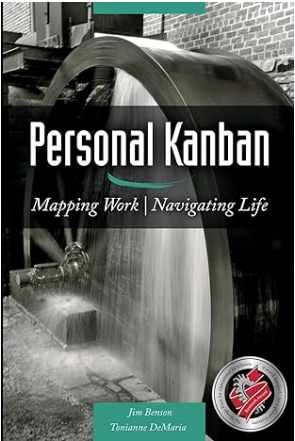In today’s fast-paced business environment, organizations seek methodologies that enable them to adapt quickly to changing demands while maintaining optimal workflow. Enter Kanban methodology – a powerful approach to project management that emphasizes visualizing work, limiting work in progress (WIP), and optimizing flow. Let’s delve into why Kanban is gaining traction across industries, backed by studies, and explore why it might be the right fit for your organization.
Understanding Kanban Methodology:
Kanban, originating from lean manufacturing principles, provides teams with a visual representation of their workflow using a Kanban board. Tasks are represented as cards moving through different stages, allowing teams to track progress at a glance. By limiting WIP, Kanban ensures that teams focus on completing tasks before taking on new ones, thus preventing bottlenecks and improving efficiency.
Studies Supporting Kanban’s Effectiveness:
Research has consistently shown the effectiveness of Kanban methodology in various settings. For instance, a study conducted by MIT Sloan Management Review found that teams using Kanban experienced a 50% decrease in project lead times and a 25% increase in productivity. Another study published in the Journal of Systems Science and Systems Engineering highlighted how Kanban helped organizations reduce cycle times and improve resource utilization.
Advantages and Limitations of Kanban:
While Kanban offers numerous benefits, including increased visibility, flexibility, and faster delivery times, it’s essential to acknowledge its limitations. One potential challenge is the need for disciplined WIP management – failure to enforce WIP limits can lead to overburdened teams and reduced efficiency. Additionally, Kanban may not be suitable for projects requiring strict deadlines or extensive upfront planning.

Take your skills to the next level by checking out this book:
Personal Kanban asks only that we visualize our work and limit our work-in-progress. Visualizing work allows us to transform our workload into an actionable, context-sensitive flow. Limiting our work-in-progress helps us complete what we start and understand the value of our choices.
Large Organizations Embracing Kanban
Several large organizations, including Spotify, Microsoft, and Toyota, have adopted Kanban methodology with remarkable success. These companies recognize the value of visualizing work, promoting collaboration, and continuously improving processes. For example, Spotify leverages Kanban to manage its complex software development projects, allowing teams to adapt to evolving customer needs swiftly.
Let’s delve deeper into why companies like Spotify, Microsoft, and Toyota have chosen to adopt the Kanban methodology:
- Spotify:
- Spotify, the renowned music streaming service, has embraced Kanban methodology as part of its Agile development practices. The company’s engineering culture emphasizes autonomy, alignment, and a relentless focus on the customer experience. Here’s why Kanban works for Spotify:
- Flexibility: Kanban’s emphasis on flexibility aligns well with Spotify’s dynamic and rapidly evolving environment. Teams have the autonomy to manage their workloads and adapt their processes as needed.
- Visual Management: Kanban boards provide a clear visual representation of work in progress, enabling teams to track tasks and identify bottlenecks easily. This visibility promotes transparency and alignment across teams.
- Continuous Improvement: Spotify’s engineering culture is built on a foundation of continuous improvement. Kanban facilitates this by encouraging teams to experiment, learn from their experiences, and optimize their workflows over time.
- Spotify, the renowned music streaming service, has embraced Kanban methodology as part of its Agile development practices. The company’s engineering culture emphasizes autonomy, alignment, and a relentless focus on the customer experience. Here’s why Kanban works for Spotify:
- Microsoft:
- As one of the world’s leading technology companies, Microsoft has embraced Agile methodologies, including Kanban, to drive innovation and deliver value to customers. Here’s why Kanban is a natural fit for Microsoft:
- Scalability: With a vast array of products and services, Microsoft operates at a massive scale. Kanban’s scalability allows teams to manage complex projects and portfolios efficiently while maintaining visibility and control.
- Collaboration: Kanban promotes collaboration and cross-functional teamwork, which is essential for a company like Microsoft with diverse teams working on interconnected projects.
- Customer Focus: Microsoft places a strong emphasis on understanding and meeting customer needs. Kanban’s customer-centric approach aligns well with this focus, enabling teams to prioritize tasks based on customer feedback and market demands.
- As one of the world’s leading technology companies, Microsoft has embraced Agile methodologies, including Kanban, to drive innovation and deliver value to customers. Here’s why Kanban is a natural fit for Microsoft:
- Toyota:
- Toyota, the pioneering automobile manufacturer, is renowned for its commitment to continuous improvement and operational excellence. Kanban methodology has been integral to Toyota’s success for several decades. Here’s why Kanban works for Toyota:
- Lean Principles: Kanban is rooted in lean manufacturing principles, which Toyota pioneered with the Toyota Production System (TPS). The company’s culture of waste reduction, just-in-time production, and continuous flow aligns closely with Kanban’s core principles.
- Efficiency and Quality: Kanban helps Toyota optimize production processes, minimize inventory, and respond quickly to changes in demand. This focus on efficiency and quality has enabled Toyota to maintain its competitive edge in the automotive industry.
- Kaizen (Continuous Improvement): Toyota’s commitment to kaizen – continuous improvement – is reflected in its use of Kanban. By visualizing workflows, identifying inefficiencies, and empowering employees to suggest improvements, Toyota fosters a culture of continuous learning and innovation.
- Toyota, the pioneering automobile manufacturer, is renowned for its commitment to continuous improvement and operational excellence. Kanban methodology has been integral to Toyota’s success for several decades. Here’s why Kanban works for Toyota:
Setting Work In Progress (WIP) Limits
Setting Work in Progress (WIP) limits for each column on a Kanban board is crucial for preventing overloading the team and maintaining a smooth workflow. Here’s how both the team and the project manager (PM) can collaborate to establish and manage WIP limits effectively:
1. Collaborative Team Effort:
a. Understand Capacity: The team needs to collectively understand their capacity for handling tasks. This involves considering factors like team size, skill levels, and available resources.
b. Analyze Past Performance: Review past performance data to identify trends and patterns. Analyze how many tasks the team typically handles simultaneously without causing bottlenecks or delays.
c. Experiment and Iterate: Start with initial WIP limits based on capacity estimates but be willing to adjust them as needed. Encourage the team to experiment with different WIP limits and observe the impact on workflow efficiency.
d. Foster Transparency: Ensure that the team members have visibility into each other’s workload and progress. This transparency helps everyone understand the rationale behind WIP limits and promotes accountability.
e. Continuous Improvement: Regularly review and reflect on the effectiveness of WIP limits during team meetings or retrospectives. Solicit feedback from team members on whether the limits are realistic and if adjustments are necessary.
2. Project Manager’s Role:
a. Facilitate Discussions: As the PM, facilitate discussions within the team to establish WIP limits that balance productivity and workload. Encourage open communication and collaboration to reach a consensus.
b. Monitor and Enforce Limits: Keep an eye on the Kanban board to ensure that WIP limits are being adhered to. If a column exceeds its limit, work with the team to understand the root cause and take corrective actions.
c. Analyze Metrics: Use data and metrics from the Kanban board to track workflow efficiency and identify areas for improvement. Analyze lead time, cycle time, and throughput to assess the impact of WIP limits on overall performance.
d. Support Continuous Learning: Provide support and resources for the team to learn and improve their understanding of Kanban principles. Offer training sessions or workshops on topics like lean principles, WIP management, and flow optimization.
e. Advocate for the Team: Advocate for the team’s needs and concerns regarding workload management. If external pressures threaten to overload the team, communicate with stakeholders to set realistic expectations and prioritize tasks effectively.
By working together as a team and with the guidance of the project manager, setting and managing WIP limits becomes a collaborative effort focused on optimizing workflow efficiency and delivering value to customers consistently.
Who Should Use Kanban?
Kanban methodology is particularly well-suited for organizations seeking a flexible and adaptive approach to project management. It’s ideal for teams working on continuous delivery projects, support and maintenance tasks, or those with fluctuating priorities. Moreover, organizations that value transparency, collaboration, and continuous improvement are likely to benefit significantly from implementing Kanban.
How Can a Team Use Kanban?
Implementing Kanban is relatively straightforward. Start by visualizing your workflow on a Kanban board, dividing it into columns representing different stages of work. Set WIP limits for each column to prevent overloading the team. Regularly review and optimize the workflow based on feedback and performance metrics. Embrace a culture of continuous improvement, empowering team members to suggest and implement changes to enhance efficiency and effectiveness.
| To Do (WIP: 3) | In Progress (WIP: 5) | QA Testing (WIP: 2) | Done |
| Task ! | |||
| Task 2 | |||
| Task 3 |
In conclusion, the Kanban methodology offers a proven approach to project management, enabling organizations to streamline workflows, increase productivity, and deliver value to customers more effectively. By leveraging Kanban’s principles and practices, teams can adapt to changing demands with ease while fostering collaboration and innovation. Consider incorporating Kanban into your organization’s project management toolkit and unlock the power of visualizing work and optimizing flow.





